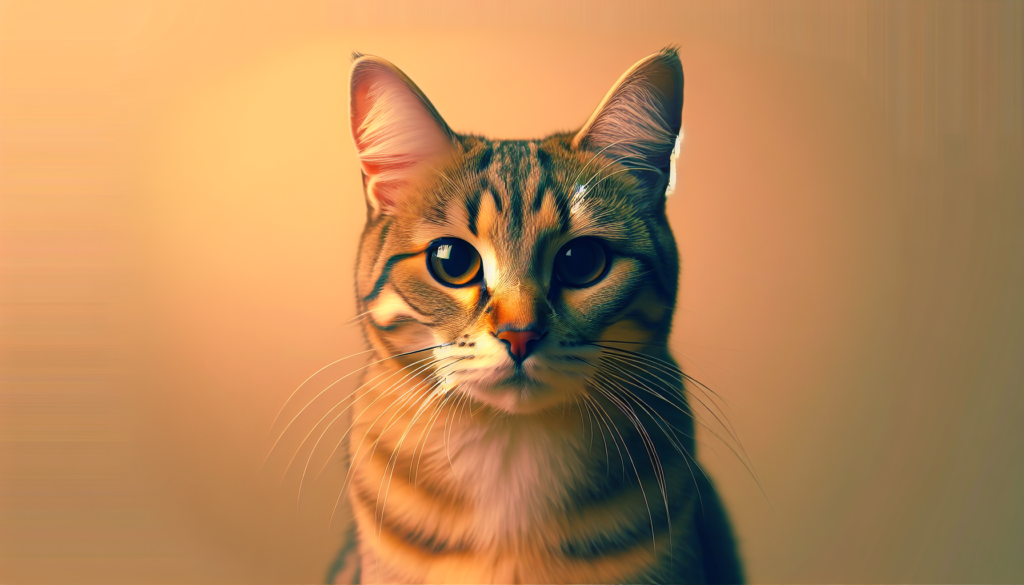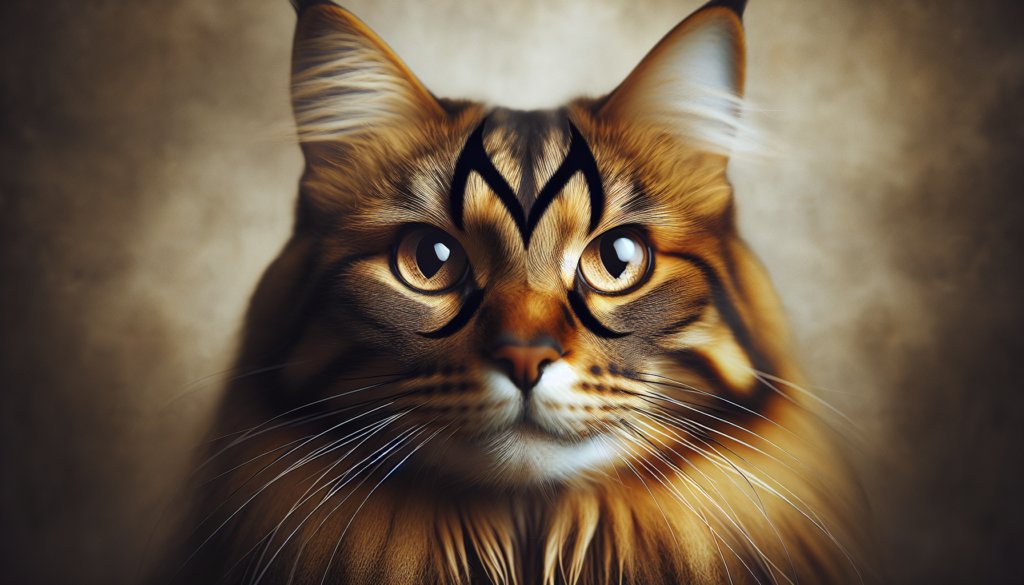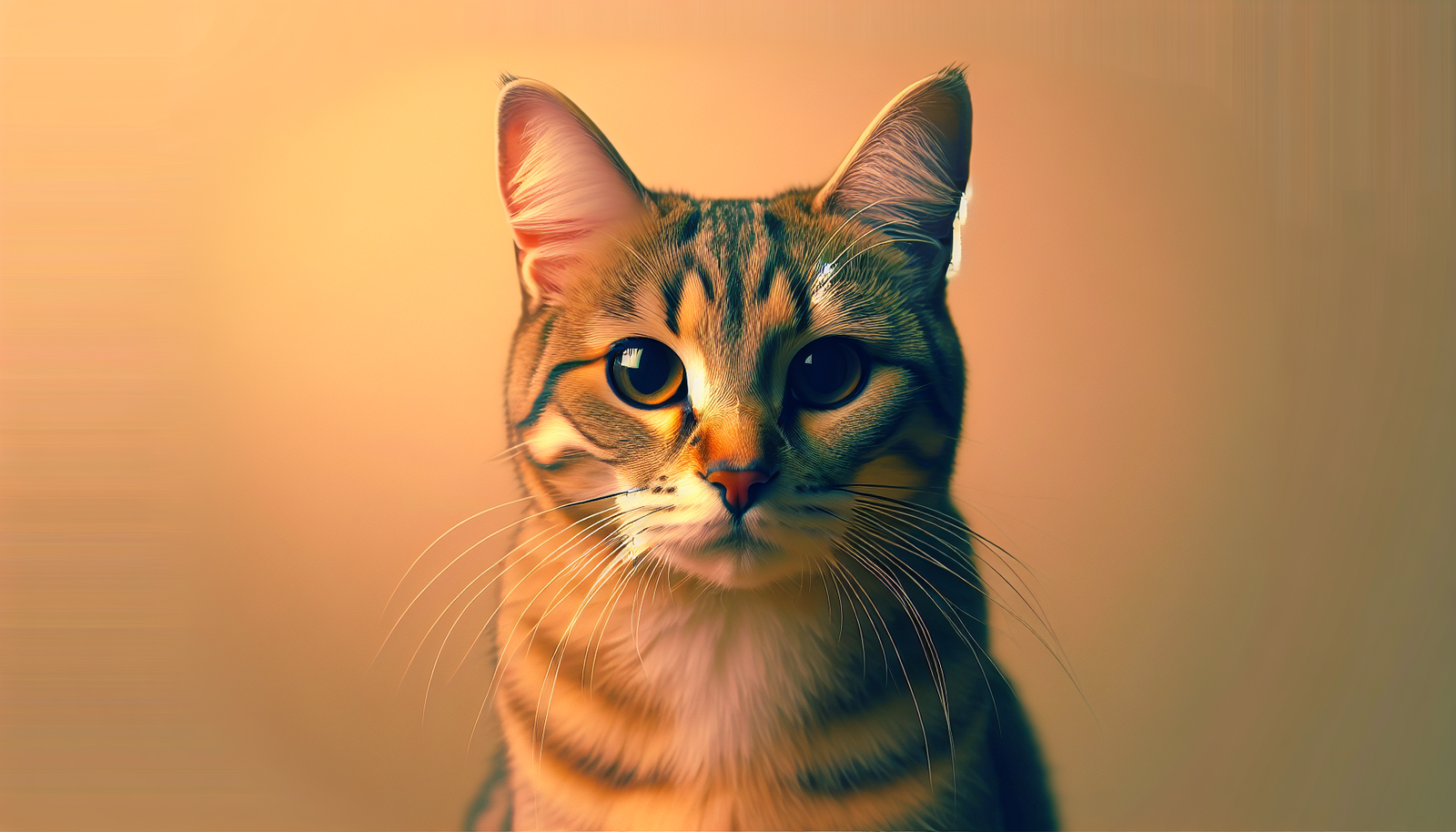Have you ever noticed that most tabby cats have a distinct marking on their forehead in the shape of the letter ‘M’? It’s quite fascinating, isn’t it? But why do tabby cats have this mysterious ‘M’? You may have wondered if all tabby cats share this peculiar trait. In this article, we’ll explore the intriguing reason behind why tabby cats possess this unique feature and whether it truly applies to every single tabby feline. So, get ready to uncover the secret of the ‘M’ on tabby cats’ foreheads!

Evolutionary Background
Origin of Tabby Cats
Tabby cats, with their distinctive striped or spotted coat patterns, have a fascinating evolutionary background. While there is still much we do not know about the precise origins of tabby cats, researchers believe that they share a common ancestry with domestic cats. It is believed that wild cats, particularly those from the African wildcat lineage, exhibited similar coat patterns, which eventually gave rise to the tabby markings we see today in domestic cats.
The Coat Patterns of Tabby Cats
Tabby cats are renowned for their beautiful coat patterns, which can range from classic stripes to swirls, spots, or a combination of these patterns. The unique coat patterns of tabby cats are linked to their genetic makeup, specifically the presence of the tabby gene. This gene determines the distribution and arrangement of pigments in the fur, resulting in the variety of coat patterns observed in tabby cats.
The M on the Forehead
One of the most distinctive features of tabby cats is the M-shaped marking on their foreheads. This marking, affectionately referred to as the “M”, is a common characteristic observed in many tabby cats. The M is formed by a darker line of fur in the middle of the forehead, which converges towards the cat’s nose. This marking has captivated the curiosity of cat lovers and researchers alike, prompting theories and explanations for its significance.
Theories and Explanations
Genetic Significance
Numerous theories suggest that the M-shaped marking on tabby cats’ foreheads has genetic significance. According to some researchers, the M is a result of the tabby gene’s influence on the pigment distribution in the fur. It is believed that the gene promotes the development of the M pattern during the early stages of embryonic development. This genetic significance adds to the charm and mystique surrounding tabby cats.
Cultural and Historical Significance
Apart from the genetic explanations, the M-shaped marking on tabby cats’ foreheads has also held cultural and historical significance throughout the ages. In various cultures and traditions, this marking is associated with positive symbolism and considered a sign of luck, protection, and divine connection. For centuries, tabby cats with the M marking have been revered and even worshipped in some cultures, further fueling the fascination with these magnificent felines.
Superstitions and Myths
The M-shaped marking on tabby cats’ foreheads has also given rise to numerous superstitions and myths. In some regions, it is believed that a tabby cat with a prominent M will bring good fortune to its owner. Legends and folktales often depict tabby cats with the M as magical beings or wise companions. These superstitions and myths have contributed to the enduring interest and adoration people hold for tabby cats.
Genetics and Inheritance
The Tabby Gene
The tabby gene, also known as the agouti gene, is responsible for the distinctive coat patterns observed in tabby cats. This gene influences the distribution and arrangement of pigments in the fur, resulting in various patterns such as stripes, spots, or a blend of both. While the exact mechanisms governing the tabby gene’s expression are still being studied, its presence is undoubtedly a defining factor in the appearance of tabby cats.
Inheritance Patterns
Tabby coat patterns can be inherited from one generation to the next through a complex pattern of genetic inheritance. The tabby gene can exist in different forms, each influencing the specific coat pattern observed in a cat. These different forms of the gene can be inherited in different ways, including dominant inheritance or polygenic inheritance. Understanding the inheritance patterns of the tabby gene can shed light on the likelihood of a tabby cat passing on its unique coat pattern to its offspring.
Variations in the M Pattern
While the M-shaped marking is a common characteristic of tabby cats, there can be variations in its appearance. Some tabby cats may have a more pronounced M, while others may have a fainter or less-defined marking. These variations can be attributed to factors such as genetic variations, the interplay of other genes responsible for coat pattern development, and individual genetic mutations. These differences contribute to the individuality and diversity seen among tabby cats.
Vestigial Traits
Theories on the Meaning of the M
The meaning behind the M-shaped marking on tabby cats’ foreheads remains a subject of speculation and theories. Some researchers propose that the M may have served a functional purpose in the wild, such as camouflaging the cat in its natural habitat. Others believe that the M could represent a vestigial trait, a remnant of ancestral markings that once had a survival advantage but have gradually lost their original purpose over time. While definitive answers are elusive, these theories provide insights into the potential significance of the M.
Similar Markings in Other Species
Interestingly, similar markings to the M-shaped pattern can be found in other species besides tabby cats. Various wild cats, such as the cheetah and the lynx, also exhibit facial markings that resemble the M in tabby cats. This similarity across different species suggests a shared underlying genetic mechanism or a convergent evolutionary path. Exploring these markings in other species can provide valuable context and broaden our understanding of the M-shaped marking’s evolution.
Possible Functional Role of the M
Although the exact functional role of the M-shaped marking on tabby cats’ foreheads is not fully understood, researchers have proposed several hypotheses. One theory suggests that the M may help with visual communication among cats, facilitating recognition and communication of social cues. Another hypothesis posits that the M could serve as a means of visual distraction or camouflage, possibly helping to confuse or deter predators. While these theories are speculative, they offer intriguing possibilities for further investigation.

Environmental and Developmental Factors
Melanocyte Development and Migration
The development of the M-shaped marking on tabby cats’ foreheads is intricately linked to the migration and distribution of melanocytes, the cells responsible for producing pigments in the fur. During embryonic development, melanocytes migrate and distribute themselves in a specific pattern, giving rise to the unique characteristics of the cat’s coat, including the M. Environmental cues and genetic factors play a role in guiding this migration process, contributing to the formation of the M-shaped marking.
Effects of Temperature and Hormones
Environmental factors, such as temperature and hormone levels, can influence the pigmentation and pattern development in a tabby cat’s fur. Some researchers propose that cooler temperatures during embryonic development may enhance the formation of the M-shaped marking, while warmer temperatures could result in a less pronounced or absent marking. Hormonal fluctuations, particularly those related to stress or mating, may also impact the expressivity of the M pattern. These complex interactions add another layer to the intricate development of tabby cats’ coat patterns.
Developmental Stages and Pigmentation
The formation of the M-shaped marking occurs during specific developmental stages of a tabby cat’s embryonic development. As melanocytes migrate and distribute themselves, the unique pattern begins to take shape. Different stages of fetal development influence the pigmentation and arrangement of the fur, ultimately determining the intensity and visibility of the M. Understanding these developmental processes provides insights into the factors that contribute to the distinctive appearance of tabby cats.
Cultural Depictions and Symbolism
Folklore and Ancient Cultures
Tabby cats, with their characteristic M-shaped markings, have been revered and celebrated in folklore and ancient cultures throughout history. In ancient Egypt, for instance, tabby cats were considered sacred and worshipped as symbols of protection and good fortune. In Norse mythology, Freyja, the goddess of love and beauty, was believed to have traveled with her chariot pulled by two large tabby cats. These cultural depictions highlight the deep-rooted significance and veneration associated with tabby cats.
Religious and Spiritual Symbolism
The M-shaped marking on tabby cats’ foreheads has also found its way into various religious and spiritual beliefs. In some cultures, the M is seen as a divine marking, symbolizing a connection to higher powers. Additionally, tabby cats with the M are often associated with positive attributes such as intelligence, intuition, and mystical qualities. These symbolic associations reflect the profound impact that tabby cats and their markings have had on human beliefs and spirituality.
Pop Culture References
Beyond ancient folklore and religious symbolism, tabby cats with the M marking continue to captivate popular culture. From children’s books featuring mischievous tabby cats to iconic animated characters like Garfield, the M has become an instantly recognizable and endearing symbol. The positive and playful image associated with tabby cats and their markings has solidified their place in pop culture, ensuring that they remain beloved by people of all ages.
Conclusion
The M-shaped marking on tabby cats’ foreheads is a captivating and distinctive feature that has given rise to numerous theories, explanations, and symbolic interpretations. From its evolutionary origins to its genetic significance, the M continues to fascinate researchers, cat lovers, and cultural enthusiasts alike. While the exact nature and purpose of the M may remain elusive, its enduring presence on tabby cats reminds us of the rich and complex relationship between humans and these enigmatic feline companions.

